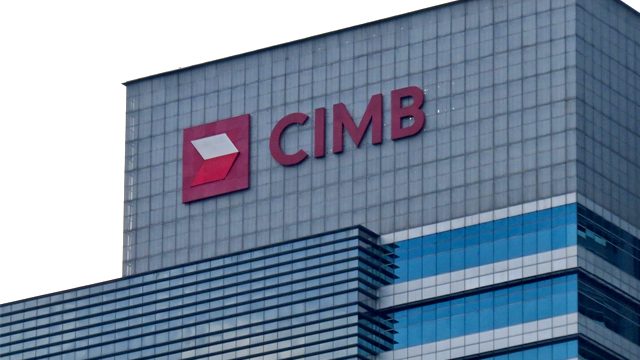SUMMARY
This is AI generated summarization, which may have errors. For context, always refer to the full article.

MANILA, Philippines — The Philippines is the last country for the CIMB Group Holdings Bhd to conquer to finally claim it is present in all 10 member countries of the Association of Southeast Asian Nations (ASEAN).
The Malaysian banking giant, the 5th largest lender in the region, is already in 9 out of the 10 ASEAN member countries following the launch of its full-fledged banking operations in Vietnam in 2016. Its application for a banking license in the Philippines, its prospective 10th, is in process.
CIMB chairman Nazir Razak confirmed this to Rappler when he was in Manila to attend the ASEAN Business and Investment Summit. (WATCH: ASEAN Business and Investment Summit 2017, November 13)
“We are hoping to open CIMB in the Philippines. We submitted an application to the central bank of the Philippines. We haven’t heard back, but we are hopeful,” said the businessman who is also the brother of Malaysian Prime Minister Najib Razak.
“It completes ASEAN for us,” he added when asked why the group is keen to include the Philippines in its portfolio of 15 markets where it has a total of over 1,000 branches, one of the widest retail banking networks in ASEAN.
The bank’s regionwide scope gives it a unique value proposition, Nazir said. “I think we will bring a new franchise to the market, one where we provide our customers linkage with the rest of ASEAN in its entirety.”
ASEAN is a regional bloc composed of Indonesia, Malaysia, the Philippines, Singapore, Thailand, Brunei, Cambodia, Laos, Myanmar and Vietnam.
Digital banking
For the Philippine market, CIMB plans to roll out products and services with digital banking features.
“We will not be approaching the market here in the traditional way. We have to enter the market based on the unique features of the Filipino market, but, at the same time, take full advantage of what technology has to offer today,” Nazir said.
Their gameplan for the Philippines will be modeled after Vietnam. The two have similar features, including population and demographics. The Philippines and Vietnam have a population of about 103 million and 93 million, respectively.
Vietnam is CIMB’s test case for its ambitions to be a digital bank.
“We are also starting relatively fresh when we opened in Vietnam last year. We focused on digital banking,” Nazir shared.
CIMB’s banking license in Vietnam allows them to offer full range of corporate, commercial and consumer banking products, but a clear focus is on the mass market. About 40% of Vietnam’s population are the under 25 and are digitally savvy.
Some banking services are rolled out via mobile phones, which means their Vietnam investment is “not infrastructure-intensive.” There is less dependence on setting up physical bank branches to reach and service clients.
Second time’s a charm
This is CIMB’s second attempt to enter the Philippine banking industry.
In 2012, it negotiated with San Miguel Corporation to acquire the Philippine conglomerate’s 60% stake in Bank of Commerce, a medium-sized bank, for P12 billion. The deal hit a snag.
San Miguel had attributed this to issues regarding the real estate assets of Bank of Commerce that it wanted CIMB to assume. (READ: CIMB scraps San Miguel deal)
“This time, we are applying for new license. We are doing it on our own,” Nazir shared.
While cementing its footprint across ASEAN is a goal, the domestic market in the Philippines also presents an opportunity for CIMB.
“We see pockets of opportunity in the Philippines, especially in the consumer market. There is still a lot of relatively unbanked population and also significantly under-leveraged population, in terms of mortgage, etcetera.”
About 80% of Filipinos are “unbanked,” or have no deposit accounts, which also limit their access to typical financial products, such as credit cards and insurance plans.
A growing number of fintech firms, or startups that offer technology- and mostly mobile-based financial services, are hoping to help fill the wide gap.
Industry liberalization
CIMB’s second attempt makes it among the most recent regional banks to seek to take advantage of a 2014 law in the Philippines (Republic Act 10641), which liberalized the local banking sector by lifting the previous limit of 10 foreign banks operating in the Philippines at any given time. (READ: Philippines allows full entry of foreign banks)
Maybank, another Malaysian bank, is among those 10. It has been operating in the Philippines since 1997.
So far, the Bangko Sentral ng Pilipinas (BSP) has accredited nearly a dozen banks, most of them from Asia.
Liberalizing the Philippine market has been BSP’s way to help move the ASEAN Banking Integration Framework (ABIF) forward as it nears its goal of being in place by 2020.
The ABIF is the pillar of the region’s financial integration efforts. Any two countries can make bilateral deals allowing qualified ASEAN banks (QABs) — high quality banks that satisfy stringent requirements — to operate in each other’s markets on the same terms as local banks.
Already in place is an agreement between the central banks of the Philippines and Malaysia to allow the entry of QABs in each others’ jurisdiction. (READ: BSP, Malaysian central bank ink deal for banks’ entry)
BSP governor Nestor Espenilla Jr. egged other ASEAN members to participate in this framework for regional banking. “Let’s engage… We need to be able to create spaces where we work together, build standards… create a framework for cooperation and competition,” he told the audience at the ASEAN investment summit.
CIMB, the 5th largest in ASEAN, has assets of US$108 billion as of 2016, more than double that of Philippines’ largest, BDO Unibank, which has assets of $47 billion. (READ: BDO guards turf from giant ASEAN lenders)
So far, no Philippine bank has expressed interest in expanding in the region. — Rappler.com
Add a comment
How does this make you feel?
There are no comments yet. Add your comment to start the conversation.